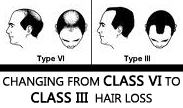Hair Transplant Donor Scar Revisions
Tuesday, December 14th, 2010Q:
I am a previous hair transplant patient who has class VI hair loss. I had previous procedures done to get some thin hair in the front and top. I am keeping my hair very short on the back and my primary goal was to camouflage the scar in the back of my head from previous hair transplants. So far, I have achieved this by simply growing my hair longer, and covered the rest of my scalp with Toppik-like products.

Cosmetically, the hair restoration was successful, but constant usage of this kind of product is a bit messy and annoying. Because of this, I have completely shaved my head and decided to try a different route. With the help of tattooing, I was going to go for a shaved head look. Unfortunately though, the scar is a show-stopper and I need to consider all of my options.
What I would consider to be a successful result is: short hair completely covering my head (even if only relatively light density) combined with tattooing and a self-tanner to reduce contrast. I am not “greedy” about the sides at the front, and will accept a 3 or 3A pattern. Is this possible in my case, though?
A:
It is good to hear that you are not striving for high density and that you are realistic about the final appearance of your hair. Being a class VI with limited donor hair, should leave options open to create light density in your large balding area, but obtaining more density would be extremely difficult if not impossible due to your insufficient donor hair. You should know your priorities and how many surgeries you are committed to have in order to achieve your desired look.
- If you only need to revise the scar and have trichophytic closure done to minimize the visibility of your scar, one surgery is adequate. Double edged trichophytic closure is a new technique that can improve the appearance of the scar tremendosly.
- If you are attempting to achieve higher density as well as scar revision, you may need several hair transplant procedures (depending on your donor amount available).
Your donor hair can be easily evaluated and options can be given to you for about what to be expected through attending a consultation with an experienced hair transplant doctor.
